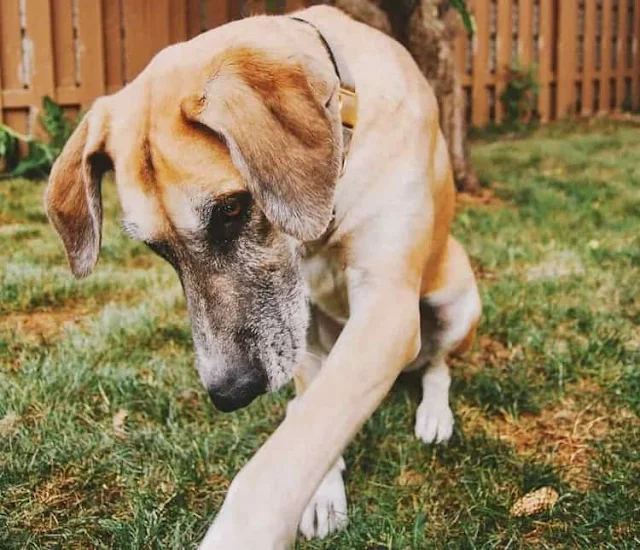Elbow dysplasia in dogs is a developmental bone disorder that typically appears during the growth stage of puppies. Recognizing the symptoms early is essential to reduce discomfort and improve your dog’s quality of life.
What is Elbow Dysplasia in Dogs?
Elbow dysplasia is a degenerative joint disease caused by abnormal bone development in the elbow joint. This leads first to arthritis (inflammation) and later to osteoarthritis (progressive wear of the joint structures).
The canine elbow is a complex joint formed by three bones: the radius, ulna, and humerus. If these bones fail to align correctly during growth, weight is unevenly distributed. This abnormal pressure causes pain, lameness, and inflammation, which eventually develop into arthritis.
There are two main types of elbow dysplasia:
- Unilateral: affects only one elbow.
- Bilateral: affects both elbows (seen in up to 80% of cases).

Main Causes of Elbow Dysplasia
1. Genetic Predisposition
The leading cause of elbow dysplasia is genetic. Because it is hereditary, responsible breeders avoid breeding dogs diagnosed with this condition.
2. Environmental Factors
Poor nutrition during the growth stage increases the risk of elbow dysplasia. Over-exercising puppies of predisposed breeds can also worsen the condition. A balanced diet and controlled exercise are key preventive measures.
Dog Breeds Prone to Elbow Dysplasia
Elbow dysplasia usually affects medium to giant breeds, often appearing between 4 and 6 months of age. Breeds at higher risk include:
- Rottweiler
- German Shepherd
- Neapolitan Mastiff
- Bernese Mountain Dog
- Newfoundland
- Labrador Retriever
- Golden Retriever
For these breeds, avoid excessive exercise and rough play. Diet is also crucial: limit excess calcium and protein, and consider adding chondroprotective supplements to support joint health.
Symptoms of Elbow Dysplasia in Dogs
Signs usually appear between 4–6 months of age, but mild cases may go unnoticed until osteoarthritis progresses. Common symptoms include:
- Lameness in the front legs, especially when starting movement.
- Reluctance to exercise or go on walks.
- Lameness after prolonged physical activity.
A veterinary exam and X-rays are required for diagnosis. Imaging can reveal arthritis, loose bone fragments, or incomplete bone development. Exams also help rule out other joint issues like hip dysplasia.
Treatment Options for Elbow Dysplasia
Treatment depends on severity and may include surgical or conservative options.
Surgical Treatment
In severe cases, surgery may be recommended to improve mobility and quality of life. Procedures vary:
- Fixing bone fragments with screws.
- Implanting a prosthesis.
- Removing loose bone fragments causing pain.
Conservative Treatment
For mild or inoperable cases, conservative care is used:
- Pain relief with prescribed medications.
- Exercise restriction to avoid joint strain.
- Chondroprotective supplements to strengthen joints.
- Weight management in overweight dogs.
- Orthopedic supports such as elbow braces to reduce pain and improve mobility.
Whatever the treatment plan, following the veterinarian’s recommendations closely ensures your dog lives as comfortably as possible.

